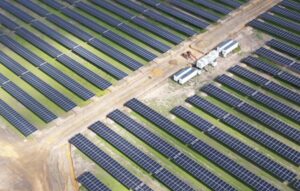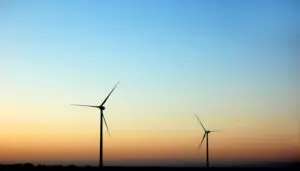US petroleum giant ConocoPhillips says it will install a 4MW battery storage array at its Darwin LNG plant to enable it to switch off one of the gas turbines that power the facility and cut its fuel and emissions by around 20 per cent.
The Texas-based Conoco says it will be the world’s first LNG plant to install a battery to reduce both emissions and fuel consumption from the gas turbines that power such energy-hungry plants, which liquefy natural gas for export, and the company sees it as a template for other LNG facilities to follow.
The Darwin LNG plant – which opened in 2006/07 and was the first in the Northern Territory – currently uses five 4MW gas turbines, with one running as “spinning reserve”, or backup in case of a failure elsewhere, and one kept in reserve for ship loading procedures.
The addition of the 4MW lithium-ion battery – the provider is apparently not yet settled – means that one turbine can be closed down and the remaining three turbines can be run at maximum efficiency.
The company did not provide the storage capacity in terms of megawatt hours, but a fact sheet sent to RenewEconomy indicated that the battery may be deployed in 1MW units with 30 minutes of storage each, pointing to a 4MW/2MWh configuration.
That makes sense because the battery will likely work in a similar vein to the Newman battery at the Alinta gas fired power station in the Pilbara mining region of Western Australia, where it to has removed the need for back-up turbines to run all the time, and has significantly reduced costs and fuel consumption.
That 35MW/11.4MWh Kokam lithium-ion battery, located next to its 178MW Mt Newman gas-fired generator, has also challenged conventional thinking by showing that a battery can run provide sufficient inertia to the local grid in the absence of thermal generator
Woodside Petroleum is also installing a 1MWh battery on one of its gas production platforms – Goodwyn A in the north west shelf – so that those operations can also burn less gas by switching switch off the gas generators it uses as “spinning reserve”, decommission one unit, and cutting its reliance on a back-up diesel generator.
ConocoPhillips says the addition of the battery array will allow it to add renewables to the Darwin LNG power plant – which is off grid – to further reduce fuel costs and emissions. This will likely focus on solar PV given the resources in the area.
“The battery has significant potential to integrate with other opportunities currently being considered by Darwin LNG to increase energy efficiency and reduce emissions such as alternative energy generation,” the president of ConocoPhillips Australia West, Chris Wilson, said in a statement.
Santos, which has an 11.5 per cent stake in the Darwin LNG venture, also hailed the project, noting it followed its own efforts to install solar and batteries to replace oil well beam pumps in the Cooper Basin, and other solar installations.
“This is the latest of a number of carbon reduction actions we are taking across the company, and not the first time we are employing battery technology,” CEO Kevin Gallagher said in a statement.
Conoco’s Wilson also pointed to the company’s work in helping establish the West Arnhem Land Fire Abatement project (WALFA), a pioneer of the savannah-burning offset industry now central to Australia’s emission reduction efforts.
“WALFA remains one of Australia’s largest offset projects and has been emulated by more than 80 other programs, offsetting more than 2 million tonnes of CO2e emissions whilst improving biodiversity outcomes, creating Indigenous jobs and protecting ancient cultural sites from intense wildfire.”
ConocoPhillips says it has a global commitment to reduce the greenhouse gas intensity” of its operations by 5 to15 percent by 2030.








